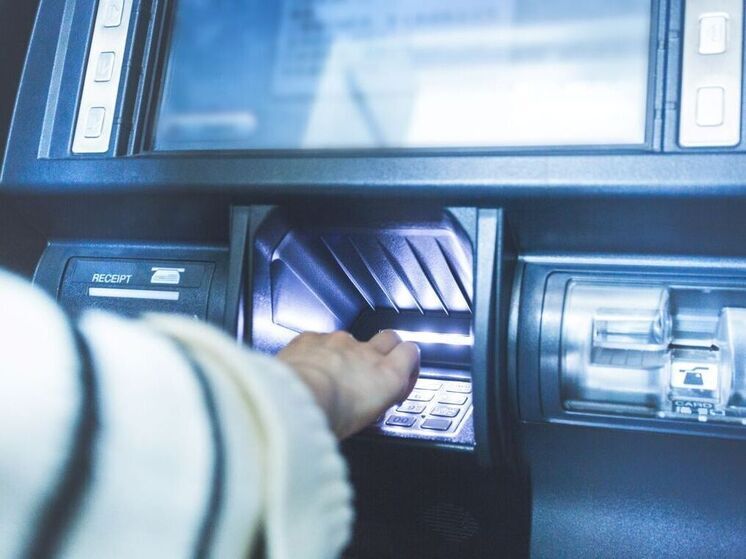
The average ATM cash withdrawal amount has fallen to a record low in Russia.
Russians are increasingly using ATMs not for cash withdrawals, but to deposit money into their accounts. This subtle shift in habits marks a significant era: over recent years, cashless payments have largely replaced physical currency in daily life. Experts believe this trend is driven not only by convenience but also by the perception of digital money as a symbol of control and security. New Central Bank regulations, limiting suspicious withdrawals, have further solidified this development, transforming cash into a secondary option rather than the primary means of managing funds.

The Shifting Landscape of ATM Usage
Cash withdrawals from ATMs are no longer a routine activity for Russians. In the first three quarters of 2025, the average withdrawal amount dropped to 38,200 rubles, nearly 12% less than the previous year. Instead, people are increasingly approaching ATMs to deposit money onto their cards. According to a study by a major Russian bank, 75% of all ATM operations are now deposits, with only 25% being cash withdrawals. However, in terms of total value, withdrawals still slightly lead, accounting for 55% compared to 45% for deposits, indicating that while large cash transactions persist, the number of smaller withdrawals has significantly decreased.
Digitalization Drives Change
Experts view this not as a cause for concern but as a natural consequence of successful digitalization. Igor Rastorguev, a leading analyst at AMarkets, notes that «the reduction in the average cash withdrawal amount is a natural result of the country`s successful financial system digitalization.» He highlights that Russia is now among the top five countries globally for cashless payments, with 87.5% of transactions being digital in the first quarter of this year. Over the last decade, the country`s share of cashless operations has surged from 25% to almost 90%, demonstrating the maturity of its financial market.
Convenience, Security, and Economic Influence
Ivan Samoilenko, managing partner at B&C Agency, agrees, stating that «the reduction in cash circulation in Russia is a long-standing trend.» He explains that people find it convenient to pay for services, make online purchases, or transfer money digitally. Furthermore, plastic cards are now perceived as secure wallets, with citizens often keeping funds on their cards as a financial safety net. Samoilenko suggests that this «card piggy bank» reflects a cautious approach to spending, influenced by recent years` inflation and economic uncertainties.
Central Bank`s New Anti-Fraud Measures
Beyond shifting habits, new Central Bank rules introduced on September 1, 2025, also play a role. These regulations limit cash withdrawals for suspicious transactions. If a bank deems an operation risky—for instance, a large sum withdrawn late at night, in an unusual region for the client, or soon after receiving a significant transfer—the withdrawal might be capped at 50,000 rubles for 48 hours. This measure aims to protect citizens from fraud. For individuals already identified as targets of scams and listed in a special Central Bank database, an even stricter monthly limit of 100,000 rubles applies.
Igor Rastorguev reassures that these new rules do not affect honest clients. «The temporary limit of 50,000 rubles is only activated for suspicious transactions. For ordinary citizens, nothing changes,» he explains. He adds that the system has already proven effective, with banks preventing 13.5 trillion rubles in theft in 2024, an increase of 2.3 times from the previous year.
Evolving Money Management Habits
Russians are progressively adapting to new ways of managing their money. While large cash withdrawals once symbolized financial freedom, more people now feel secure with their funds «within the system»—on a card, in a deposit, or an online wallet. Cashless transactions have become an integral part of daily life, from phone transfers and public transport payments to QR code payments in cafes.
The Future of Cash and Banking
This shift also benefits banks by reducing costs associated with cash collection and ATM maintenance. However, a complete abandonment of cash is not foreseen. Experts believe physical currency will remain a «plan B» for those in areas with unstable connectivity, the elderly, or proponents of traditional cash transactions. According to Rastorguev, the Central Bank continues to develop cash infrastructure, maintaining reserves in bank vaults and upgrading ATMs. Analysts predict that the share of cashless payments might stabilize around 90% by the end of the year. Physical money will not disappear but will become less prevalent in wallets, increasingly existing as digital entries on smartphone screens.











